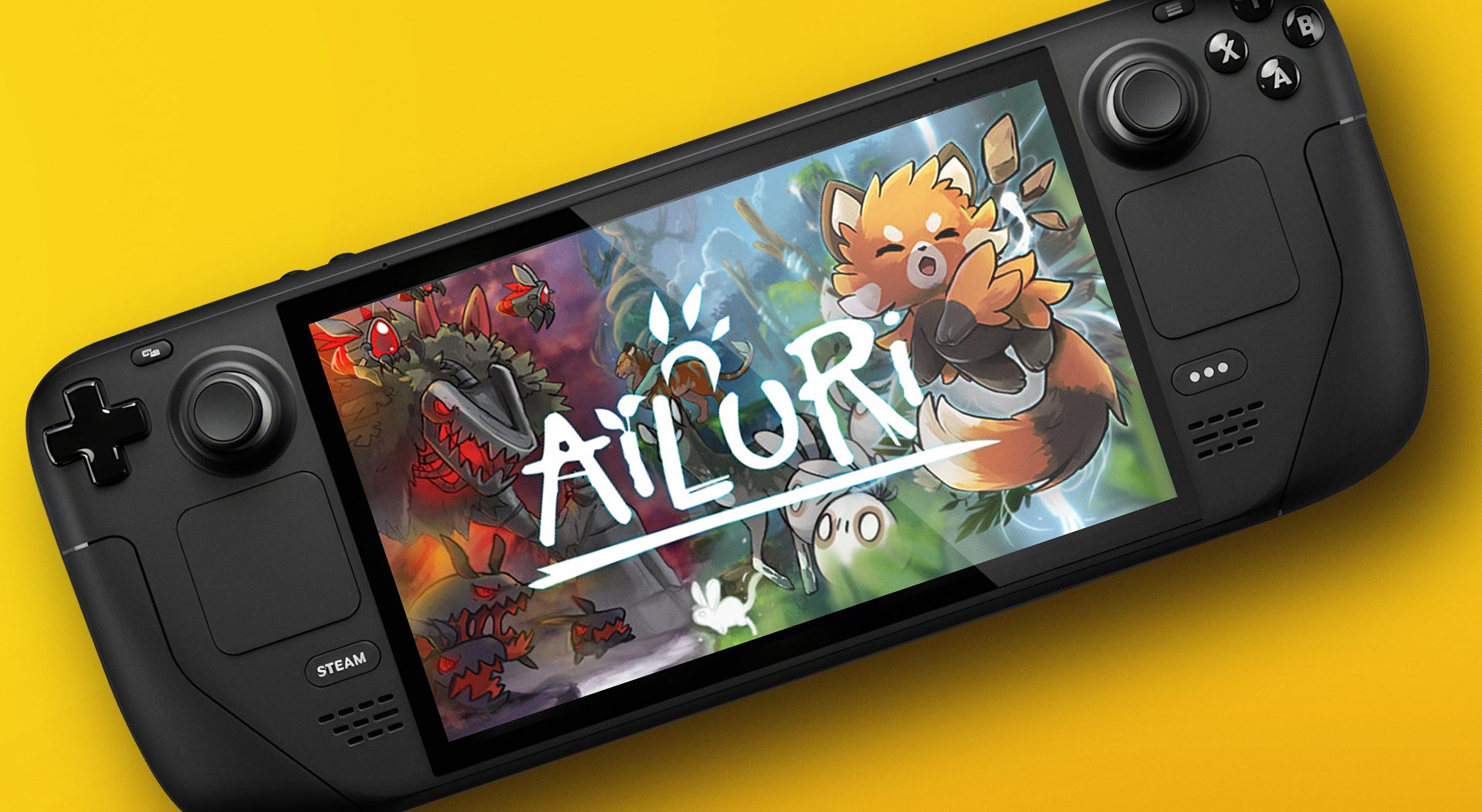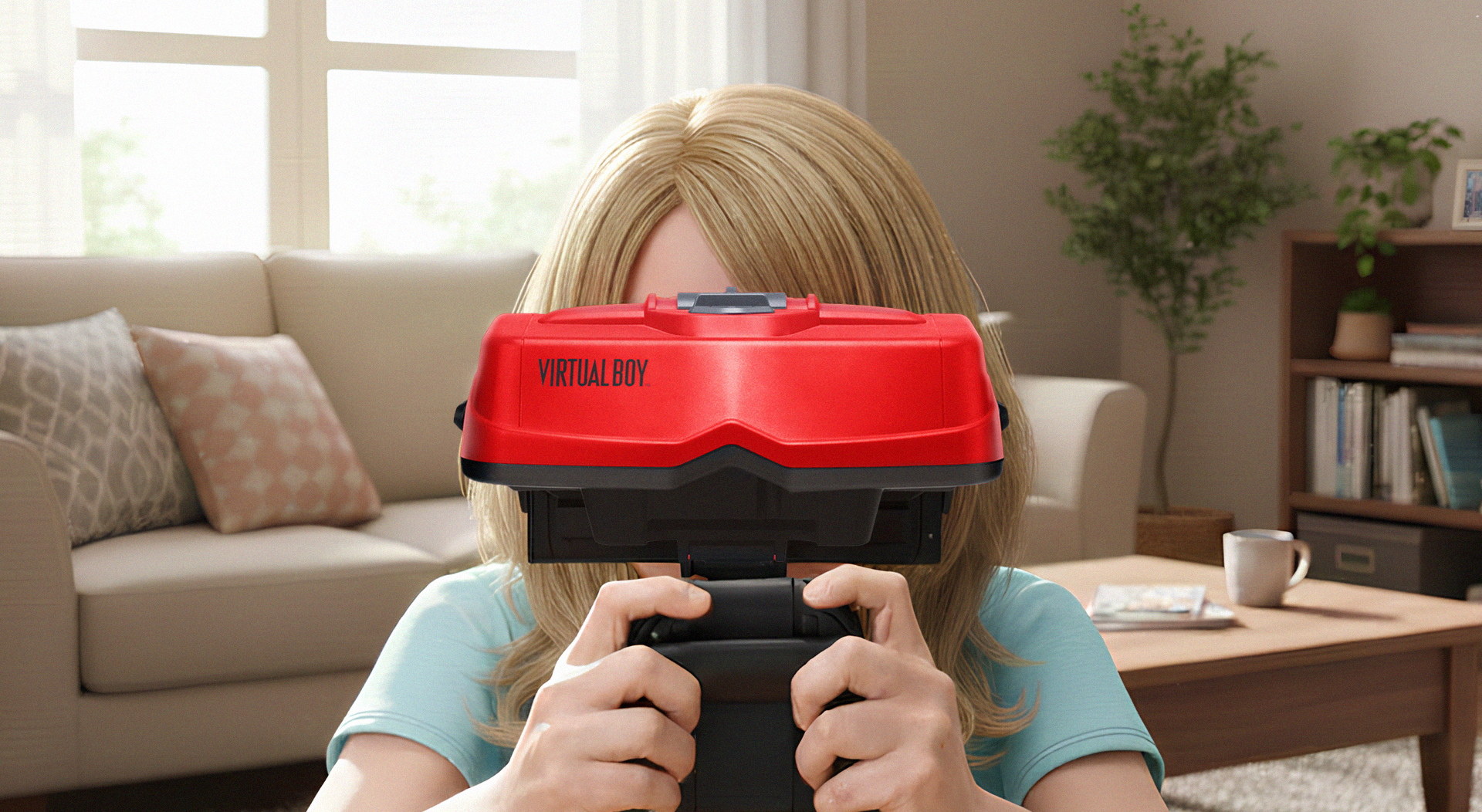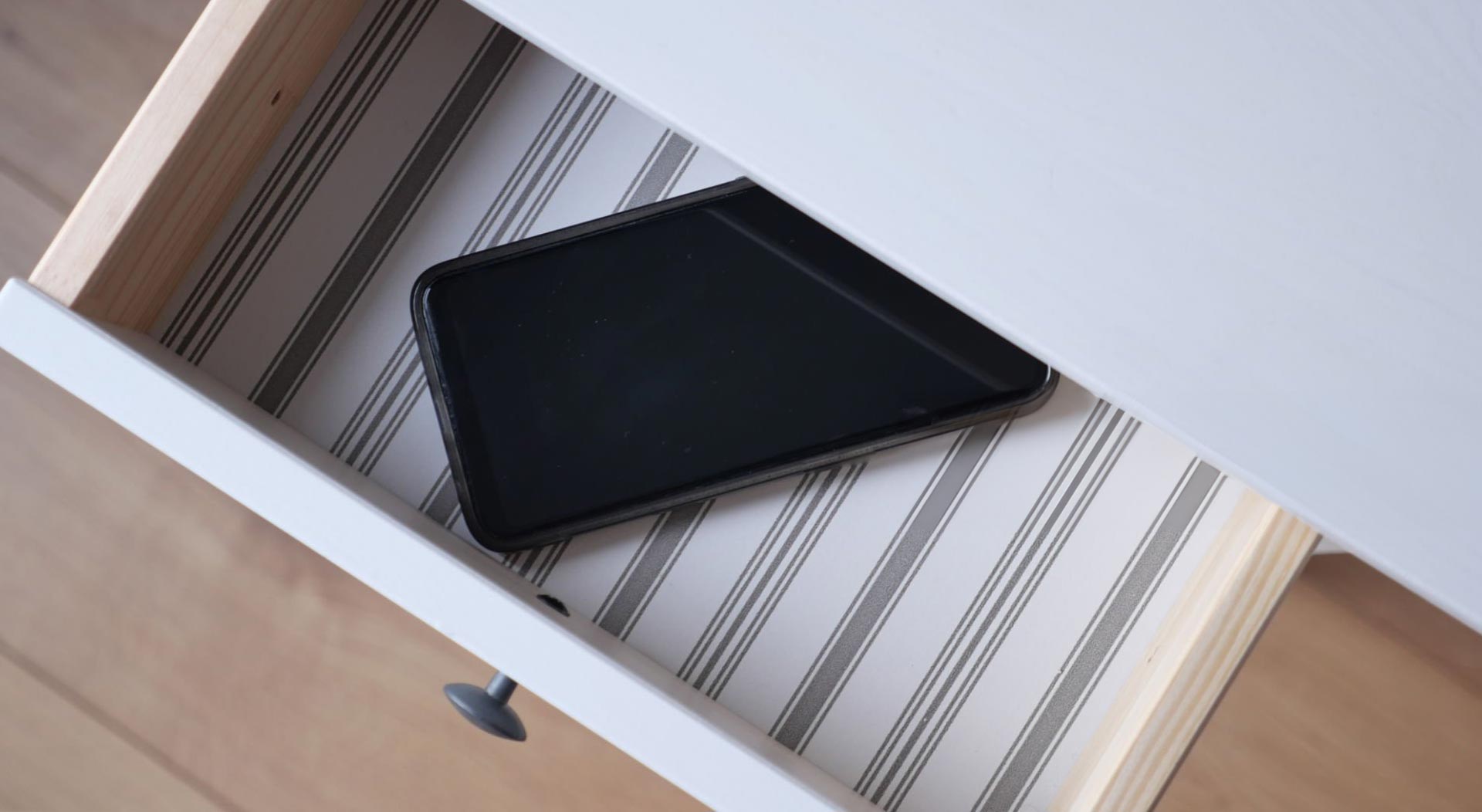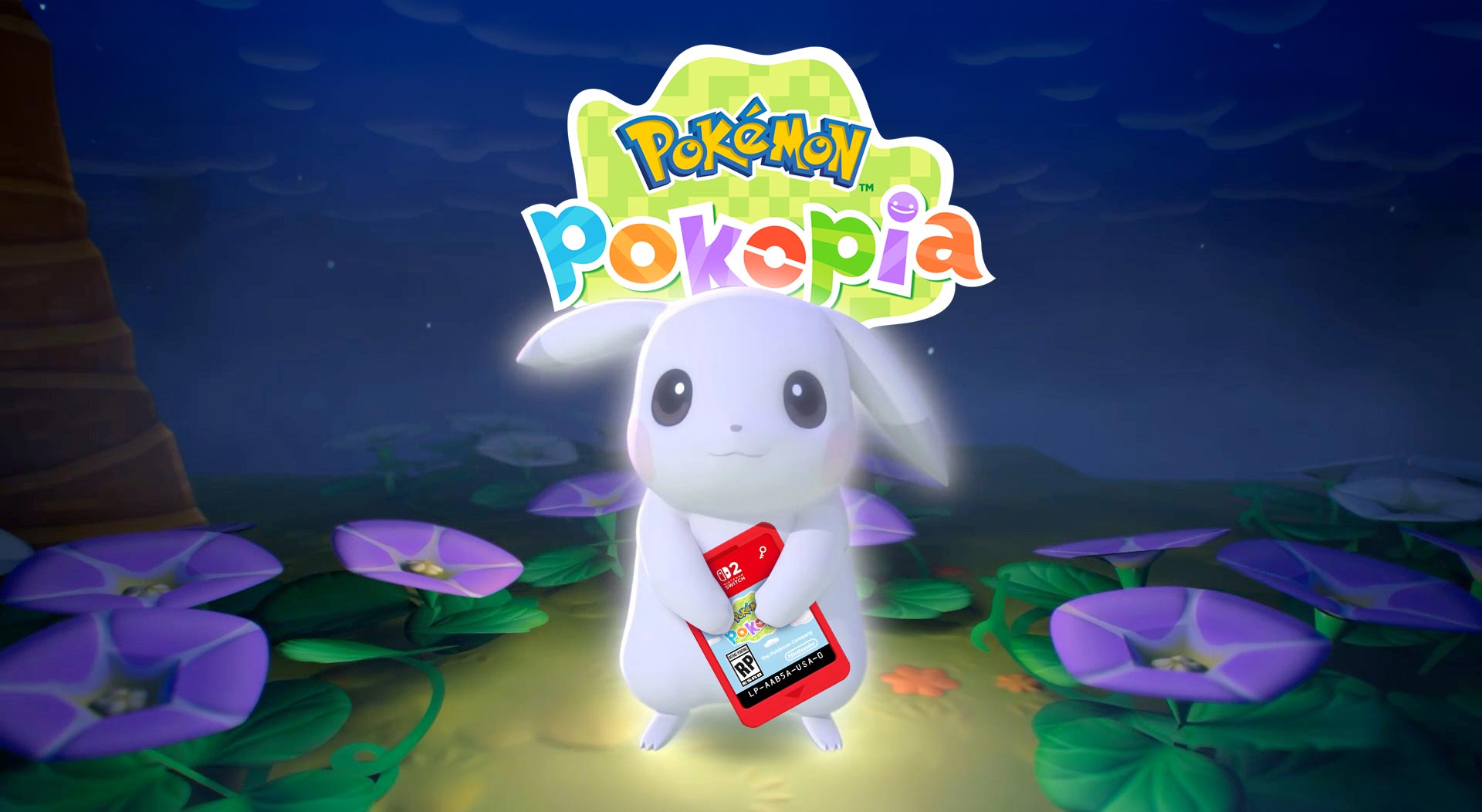Background

Though I only found out about Ailuri (currently available on Steam for AU$21.95) recently, it’s been building to launch for quite a while. Development began back in 2018 by Vivink Studios, with a Kickstarter in 2021, made from the start as a hand-drawn platforming game. The Kickstarter – its years-old videos and screenshots matching the final game perfectly – was successful, raising tens of thousands of dollars to help complete the eventual project. VivinkArt. studio head and lead artist, is probably best known for her absolutely fantastic Pokemon Yeah/Nah project, a massive stream of fan artwork depicting an Australian-inspired Pokemon region complete with over 100 unique Pokemon designs. Ailuri is Vivink Studios’ first major game, and the end result is a mixed bag, enough that I have not yet completed the game, for reasons I’ll get into further into this review. For now, let’s start with the good stuff.
Narrative
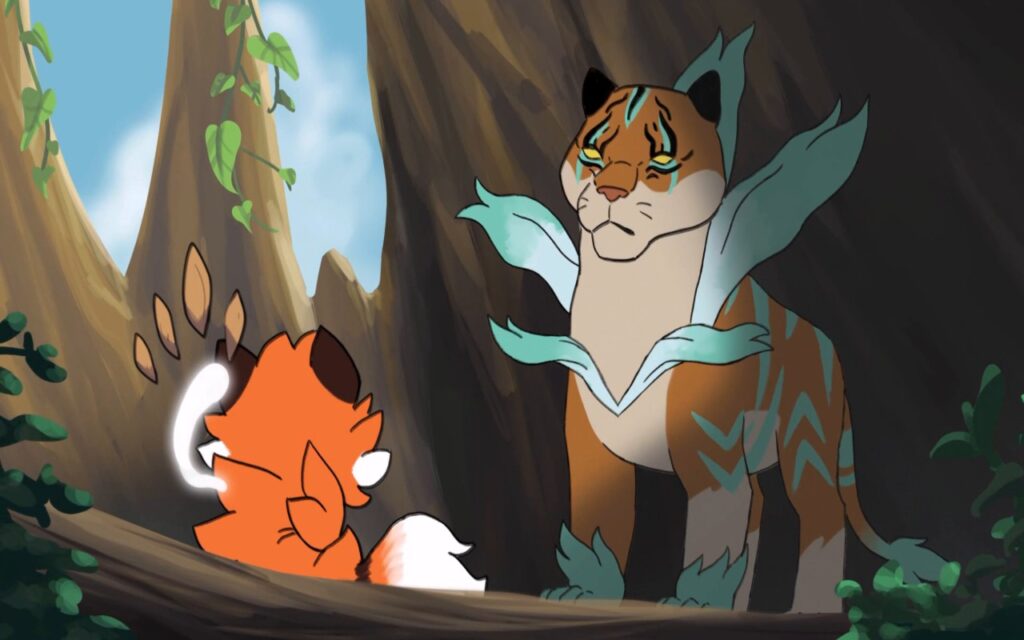
This will be one of the shorter sections, as Ailuri goes for narrative minimalism, with true story scenes only appearing once every few levels and no dialogue whatsoever. The game is primarily an action platformer not unlike the Ori titles, with a playable animal protagonist mixed with beautiful natural environments. Here, the hero is Ailuri, an adorable young red panda who has lost their parents, and goes on an odyssey across a strange and beautiful natural land overtaken by twisted machines. The environmental themes are rightly unsubtle here, focused heavily on conservation and fighting in the face of extinction, with the various fictional and non-fictional animals positioned as innocent beings in the face of the heartless and actively destructive march of technology. Ailuri’s character is shown primarily through the actions you can take in gameplay, such as replanting seeds and saving endangered animals. The story is both straightforward in meaning while making sure to let you feel out its specifics intuitively, and I appreciate it for that. Ailuri is a welcome inclusion to a long line of environmentalist gaming narratives, following in the wake of games like Final Fantasy VII.
Visuals and Music
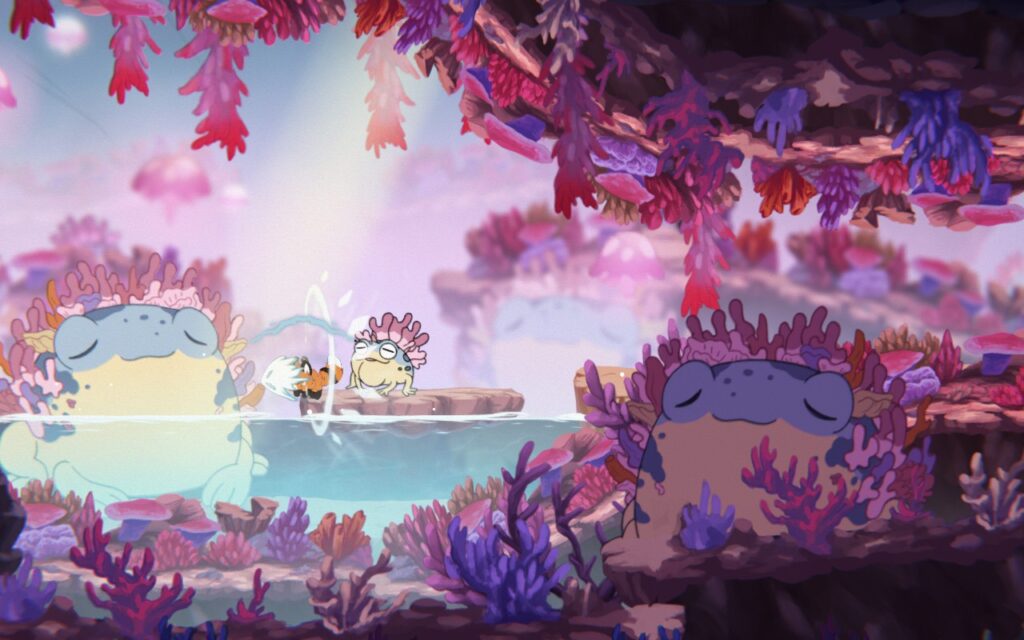
This is probably the biggest part of Ailuri and its most standout feature. Ailuri is filled to the brim with stunning and (mostly) comforting hand-drawn environments, charismatic animal characters (going far beyond Ailuri themselves) and starkly-contrasting mechanical enemies, with some giving a clear vibe of organic creatures twisted into cyborg creations. VivinkArt handles all of this with a gorgeous and simple-yet-complex artstyle that brings to mind a few possible inspirations. Her penchant for adorable animals shines through, and it obviously looks a great deal like her work on the Pokemon Yeah/Nah project, but I also couldn’t play 5 minutes of the game without thinking of the animated classic (I said what I said) Fern Gully: The Last Rainforest, especially given the Australian setting. The animals often show up not only on the same environment layer as Ailuri, but also in the foreground as shown in the above screenshot. Adults and children appearing side by side reinforce a sense of family and community, threatened by the mechanical villains. The Sanctuary – an additional place accessible from the menu where all the animals you save are sent – is one of the very best rewards in this game, as you see those animal bonds getting to thrive in the safest of places. While the audio isn’t as front-and-centre as the visual art, it’s still important, usually bringing a feeling of peace and serenity to the natural environments that’s disrupted when the action revs up. Endangered animal rooms and boss fights, for example, have much more fast-paced and stressful soundtracks – it’s an obvious but effective approach.
Gameplay
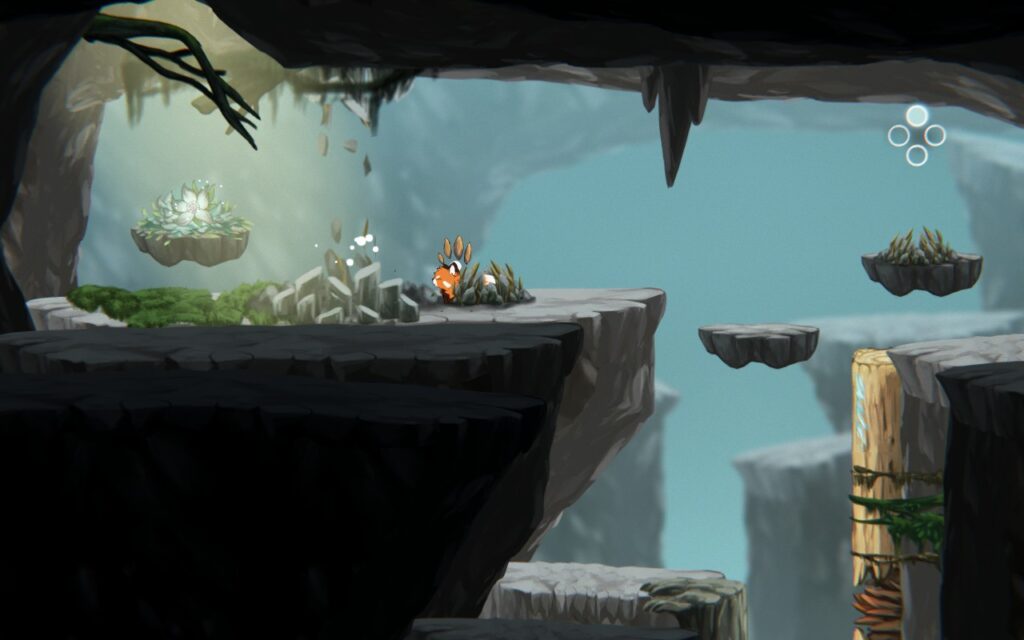
Ailuri’s gameplay doesn’t reach the heights of its visuals or narrative, but it largely works fine, with some caveats, especially its difficulty. You start with the simple abilities – movement, jumping, attacking, etc, along with a grapple mechanic that I will dig into in a moment. Playing the game lets you unlock Essence which is used to purchase new abilities for Ailuri – a multi-directional dash that’s critical to the platforming, a long-range energy blast, and a healing power are just some examples, with many relying on a limited magic meter that is restored at save points along with your health. It’s plenty of fun to leap and pounce from platform to platform, fighting the various enemies with frontal swipes and jumping pogo-stick-style attacks, but the game’s mechanics can also be frustratingly difficult. Ailuri’s attack range is extremely short, making the combat feel quite fiddly since the enemies damage you through touch as well as actual attacks. Some of the platforming can feel in need of a legitimate double-jump at times, as the dash can be quite hard to control.
But the real problem is the grapple mechanic, or more specifically the very precise and reactive physics behind it. The game frequently asks you to transport items across significant portions of the levels just through shoving and throwing them via the grapple mechanic, and while there is an aim assist option that you absolutely should activate, it remains incredibly difficult to complete many of these challenges due to how light the items are treated in the game. You can nail a throw after multiple tries only for the item to roll right off the platform, or for it to stay on but go flying when you accidentally touch it. If the item goes into the water you have to jump in and push it along as it can’t generally be grappled out of water (and if it falls into spikes or tar in the later levels, you’ll just have to start all over again). It feels like the kinds of realistic physics you see in the puzzles of a game like Half-Life 2, but without the precision required to work with them. This may be partly down to me playing on a Steam Deck, but the incoming Switch release will no doubt have similar issues. This may simply be a skill issue on my part – others could well have a much easier time with this mechanic – but I did eventually give up on the optional Seedling sidequests that served as extra-hard grapple challenges in favour of going back after I’d unlocked more abilities. Unfortunately, I then ran into more roadblocks, due to…
Technical Issues
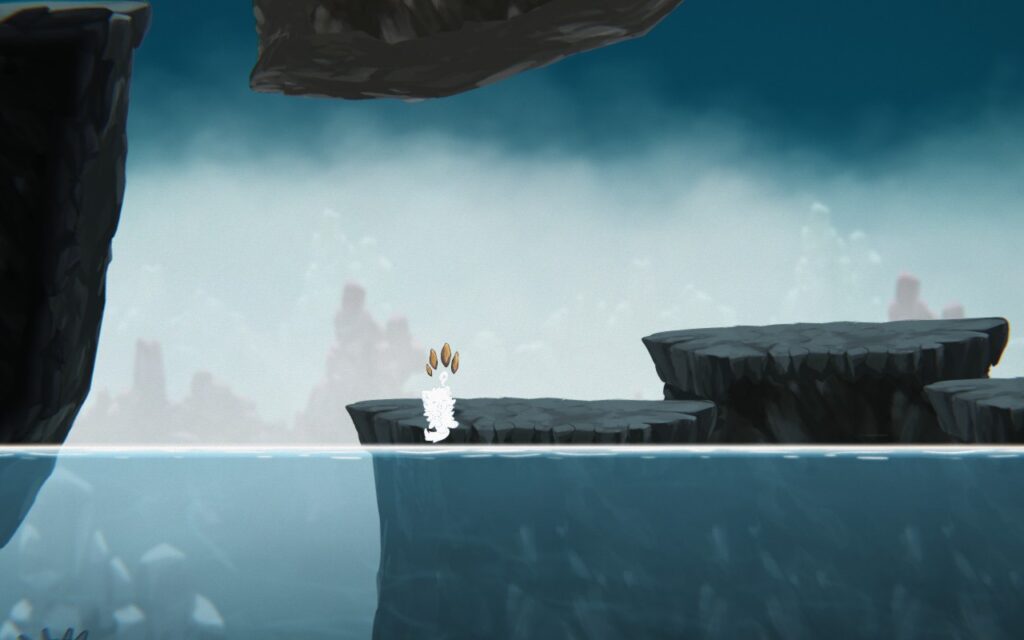
Ailuri’s most major problem, at least at the time of writing, is the list of game-breaking bugs I’ve found in my playthrough. These are part of why it’s taken so long for me to begin this review, and why I’ve temporarily decided to put the game aside for a few months to give the dev team time to release more patches. I should be clear here that since I was playing the game on a Steam Deck, I can’t be sure that it wasn’t partially responsible for the issues I’ve found. But here goes – I’ve found 3 main bugs throughout my playthrough. One, found relatively recently, is an issue where attempting to use the grapple mechanic on large objects either fails to move them sufficiently, or, if I try to use the grapple in quick succession with the Deck’s touchscreen, causes them to go flying off the screen. Since you often need to move these objects to make makeshift steps, this is a problem. The more common issue is a recurring one, where touching certain parts of the environment, or even just respawning, seems to make it impossible to attack until you take damage from an enemy. The fact that that fix exists makes the bug less game-breaking but no less annoying. I found a particularly bad version of this bug a while ago, captured in the above screenshot, where Ailuri would go into this strange white animation whenever I wasn’t moving them, and all actions outside of movement or jumping were unresponsive. The final issue was the one that caused me to temporarily give up on completing the game – I simply found a pathway I needed to walk through that was blocked off by an invisible wall, with no way through. Normally I might have just done the classic quit-and-restart, but that brings me to an issue with Ailuri that pairs badly with its bugs – you can’t simply quit out of a level and jump back in at the last checkpoint. You have to restart them entirely, and they’re quite lengthy. In this particular level I had just completed a brutal platforming challenge that took me over an hour to overcome, and I just didn’t have it in me to do it all over again. This is just one example of how these bugs drag down an otherwise commendable play experience, and they’re by far the biggest black mark on the game.
Final Thoughts
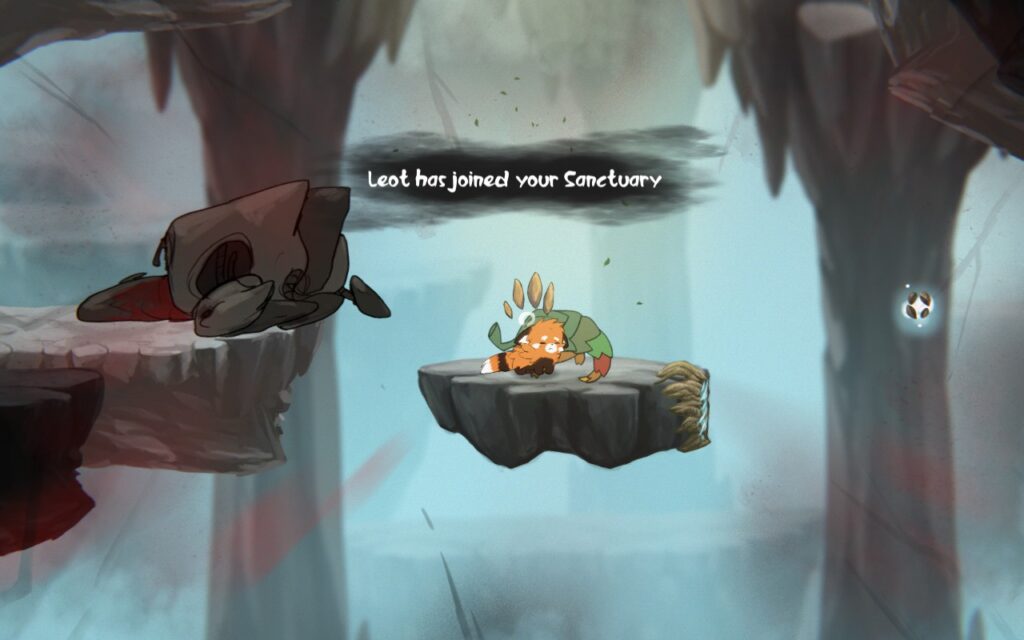
Like I said, Ailuri is a very mixed bag right now. Beautiful visuals and music, a light but meaningful narrative and solid gameplay, but tainted by severe bugs that constantly get in the game’s way, especially when combined with the rather rough inability to return to a level partway through. The good news is that the team at Vivink Studios is active on the game’s Steam Discussion page, responding to feedback and releasing patches. Their sole programmer’s computer broke down in the launch week, explaining many of the game’s longstanding problems, and the incoming Switch port clearly demonstrates that the game will be worked on and improved for a while to come. So, the question is, do I recommend you buy Ailuri? If we’re talking about a future version of the game where all the bugs are ironed out and you’re left with just the aspects I’ve praised above, then yes, absolutely. It’s a great Australian indie platformer with beautiful art and themes that I absolutely want to see supported. Do I recommend the game as it stands right now, though? Honestly, I actually still might. I know I don’t regret my purchase – the low price of only AU$21.95 on Steam combined with the significant amount of content I’ve played makes me feel I got my money’s worth so far, and I’m looking forward to the point where I can enjoy the fully patched game. If you love cute animals and natural environmental artwork, you’ll find a lot to love here. You’ll just have to come in expecting some rather serious technical problems, and possibly a few months’ wait before you can progress unhindered. If you want to help support Vivink Studios through that process, or if you’re just the biggest red panda fan possible, go for it. But if you want a completely smooth experience right from the start, I’d advise that you give Ailuri the wait-and-see approach.
